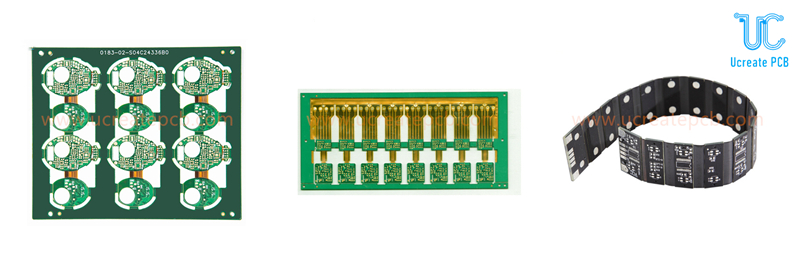Categories
Recent Posts
In the ever-evolving world of electronics, staying ahead of the curve is crucial. understand the importance of adopting cutting-edge technologies to drive innovation and success. One such technology that is revolutionizing the electronics industry is rigid-flex PCBs. These remarkable circuit boards offer a unique combination of flexibility and reliability, enabling manufacturers to create products with unprecedented design freedom and durability.
What is a rigid-flex board?
Rigid-flex board refers to a special circuit board made by pressing PCB circuit board and FPC soft board.The board materials used are mainly rigid board material FR4 and flexible board material polyimide. The rigid-flex board has both the characteristics of the FPC soft board and the characteristics of the PCB circuit board. Therefore, it can be used in some products with special requirements. It has both a certain flexible area and a certain rigid area. It is of great help to reduce the internal space,reduce the volume of the finished product, and improve the performance of the product. There are many production processes of hard bonded boards, the production is difficult, the yield rate is low, and the input materials and manpower are more. Therefore, its price is relatively expensive and the production cycle is relatively long.

1. Understanding Rigid-Flex PCBs
1.1 Unleashing Design Freedom:
Empowering designers to create complex and compact layouts
Enabling three-dimensional (3D) form factors for space-constrained applications
Facilitating flexible and seamless integration with other components
1.2 Enhancing Reliability:
Eliminating the need for connectors and interconnects, reducing potential points of failure
Withstanding harsh environmental conditions (e.g., vibration, shock, temperature fluctuations)
Resisting corrosion and reducing the risk of damage from moisture or dust
1.3 Streamlining Assembly:
Simplifying the manufacturing process by eliminating complex wiring and interconnects
Reducing assembly time and cost
Enabling automated assembly for increased efficiency and accuracy
Because the rigid-flex board is a combination of FPC and PCB, the production of the rigid-flex board should have both FPC production equipment and PCB production equipment. First, the electronic engineer draws the circuit and shape of the flexible board according to the requirements,and then sends it to the factory that can produce the soft-hard board. After the CAM engineer processes and plans the relevant documents, and then arranges the FPC production line production place FPC and PCB production lines are required to produce PCBs. After these two types of soft boards and hard boards come out, according to the planning requirements of the electronic engineer, the FPC and PCB are seamlessly pressed together by a pressing machine, and after a series of detailed links, the final manufacturing process is completed. Rigid-flex board. A very important link should be that the soft-rigid board is difficult and has many details. Before shipment, it is generally necessary to conduct a full inspection because of its relatively high value, so as to avoid the loss of relevant interests for both the supplier and the buyer.
What is the function of the just wound combination board? The rigid-flex board is to stick one or more rigid layers on the flexible board, and the circuits on the rigid layer and the circuits on the flexible layer are electrically interconnected through drilling, plated holes, and lamination processes. According to the design needs, the design concept is more suitable for the installation anddebugging of the device and the welding operation, so as to ensure that the installation of the assembly is more flexible. Rigid-flex not only maximizes space usage and minimizes weight, but it also greatly improves reliability, eliminating much of the need for soldered joints and fragile, fragile wiring that is prone to connection problems. Rigid-flex boards are also highly impact resistant and can survive high-stress environments.
2. Key Applications of Rigid-Flex PCBs
2.1 Consumer Electronics:
Ultra-slim smartphones and tablets with flexible displays
Wearable devices, such as smartwatches and fitness trackers
Foldable gadgets, offering versatility and portability
2.2 Automotive Industry:
Advanced driver-assistance systems (ADAS)
In-vehicle infotainment systems
Electric vehicle (EV) battery management systems
2.3 Aerospace and Defense:
Lightweight and robust systems for aircraft and spacecraft
Military-grade electronics with high-reliability requirements
Aerospace avionics and communication systems
2.4 Medical Devices:
Implantable and wearable medical devices
Diagnostic equipment with flexible form factors
Medical monitoring systems for remote patient care

3. Choosing the Right Rigid-Flex PCB Manufacturer
3.1 Experience and Expertise:
Partnering with a manufacturer with a proven track record in rigid-flex PCB production
Ensuring compliance with industry standards and certifications
3.2 Design Support and Collaboration:
Access to experienced engineers and designers for optimal layout and stack-up design
Collaborative approach to address design challenges and achieve desired outcomes
3.3 Quality Control and Testing:
Adherence to strict quality control procedures throughout the manufacturing process
Comprehensive testing to ensure functionality, reliability, and durability
Ucreatepcb is a professional manufacturer of PCB( Printed circuit boards ) with more than 19 years experience in China, offering one-stop service from PCB designing,manufacturing to PCB Assembling,testing and housing. UCREATE ELECTRONIC GROUP is one of top 10 PCB circuit board manufacturers in China
Send your gerber files to sales@ucreatepcb.com, we will reply in 2 hours!
4.Embracing the Future with Rigid-Flex PCBs
4.1 Advancements in Materials and Technologies:
Development of flexible and stretchable materials for enhanced flexibility and durability
Integration of advanced components, such as sensors and antennas, into flexible circuits
4.2 Internet of Things (IoT) and Industry 4.0:
Enabling seamless connectivity and data exchange in IoT devices
Supporting the implementation of smart factories and automated processes
4.3 Miniaturization and Power Density:
Meeting the demands of compact and lightweight devices without compromising performance
Enabling higher power densities for improved functionality and efficiency
Conclusion:
Whether you're in consumer electronics, automotive, aerospace, or medical devices, rigid-flex PCBs offer unparalleled advantages. Choose a reputable manufacturer with the right expertise, collaborate closely on design, and witness the transformation of your products. Embrace the future of electronics with rigid-flex PCBs and stay ahead of the curve.
Send PCB Files to Sales@ucreatepcb.com, We Will Quote You Very Soon!